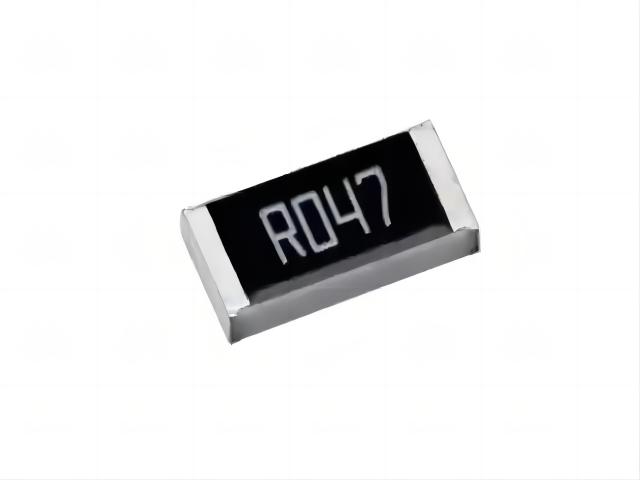Characteristics Analysis of Metal Film Resistors
As a fundamental component in modern electronic circuits, metal film resistors play an important role in precision electronic devices due to their unique physical structure and material properties. Analyze its core characteristics from six dimensions:

Precision performance advantage
The metal film resistor adopts vacuum evaporation technology to form a nickel chromium alloy thin film on the surface of the ceramic substrate. The tolerance can be controlled within the range of ± 0.1% to ± 1% through laser fine-tuning technology. This manufacturing process makes it perform well in precision measuring instruments, AD conversion circuits, and other scenarios. For example, in high-precision DAC circuits with 16 bits or more, its temperature coefficient of ± 25ppm/℃ can effectively reduce system errors caused by thermal drift.
High frequency response characteristics
The unique thin film structure endows metal film resistors with excellent frequency characteristics. Experimental data shows that in a high-frequency environment of 1MHz, the equivalent series inductance (ESL) can be controlled below 0.5nH, and the distributed capacitance (ESC) is less than 0.2pF, making it particularly suitable for terminal matching of RF front-end circuits and high-speed digital signals. Compared to carbon film resistors, its impedance stability in the high frequency range is improved by about 40%.
Long term stability performance
After 1000 hours of aging testing at 85 ℃/85% RH, the resistance change rate of the metal film resistor does not exceed ± 0.5%. This stability is due to the antioxidant properties of the metal film. In industrial control equipment, its annual drift can be controlled within 50ppm, significantly better than the typical value of 200ppm for thick film resistors.
Power tolerance capability
The metal film resistor using spiral groove technology can achieve a power density of 3W/cm ³ and can carry a continuous power of 0.125W within a limited volume (such as 0805 package). Combined with the high thermal conductivity of the ceramic substrate (24W/m · K), its thermal stability is about 30% higher than that of carbon films of the same size.
Noise suppression characteristics
The uniformity of the metal film structure makes its current noise index lower than -30dB, which has significant advantages in the application of low-noise amplification circuits. Tests have shown that in the audio frequency range (20Hz-20kHz), its noise potential is two orders of magnitude lower than that of carbon resistors, making it particularly suitable for input stage design in high fidelity audio systems.
Environmental adaptability
Through special end cap welding process and epoxy coating protection, the metal film resistor can maintain stable operation in a wide temperature range of -55 ℃ to+155 ℃. The salt spray test shows that after 96 hours of 5% NaCl spray, the change rate of contact resistance is less than 3%, which meets the corrosion resistance requirements of marine electronic equipment.
In specific application scenarios, engineers need to comprehensively consider parameters such as the accuracy level, temperature coefficient, and power derating curve of metal film resistors. For example, in the voltage feedback loop of a switching power supply, it is recommended to use a metal film resistor with a specification of ± 1% and 50ppm/℃, and use it at 70% rated power to ensure long-term reliability. With the development of surface mount technology, the metal film resistors packaged in 01005 can achieve a precision of ± 0.5%, providing a better solution for miniaturized electronic devices.
